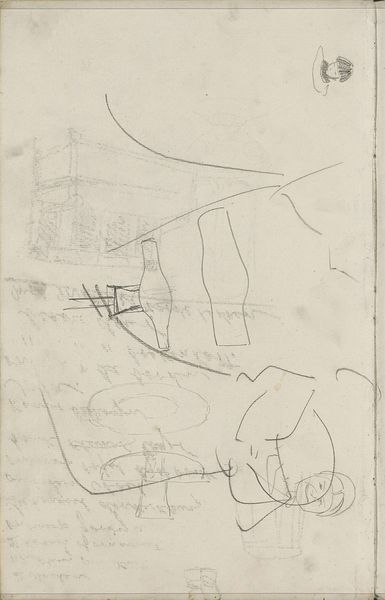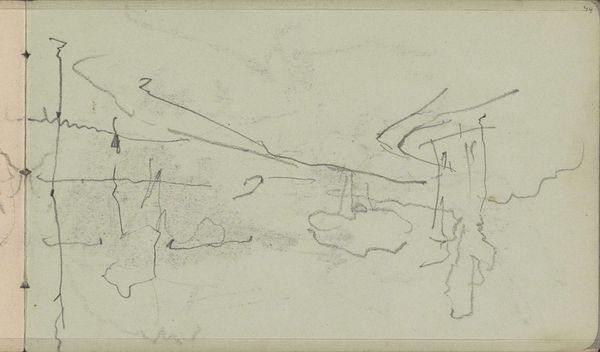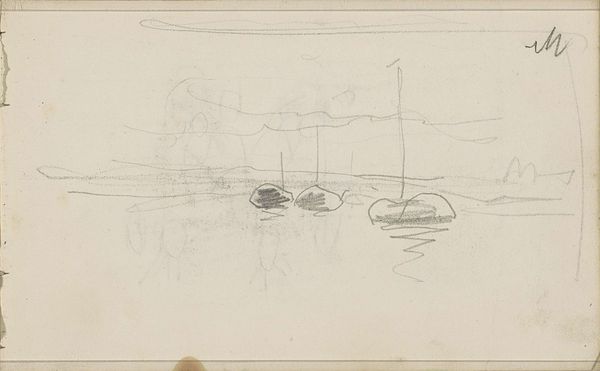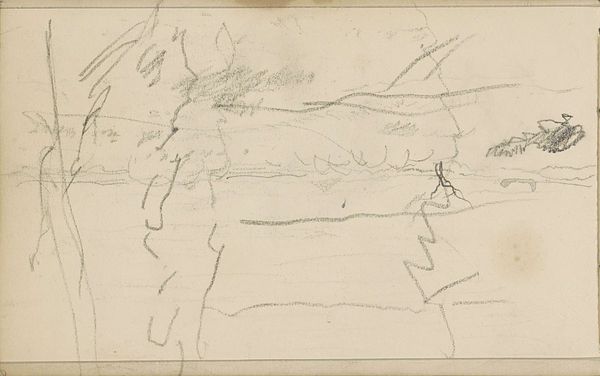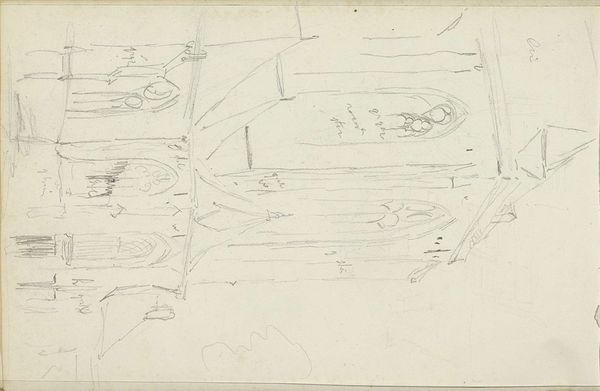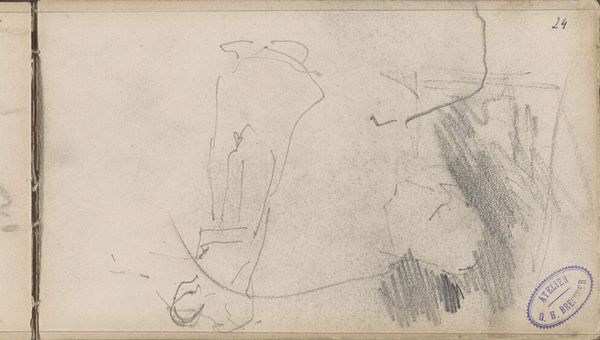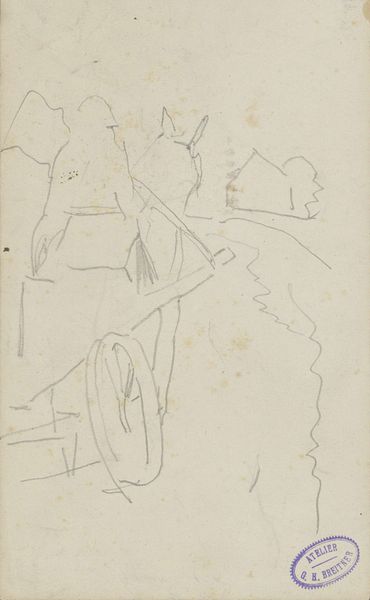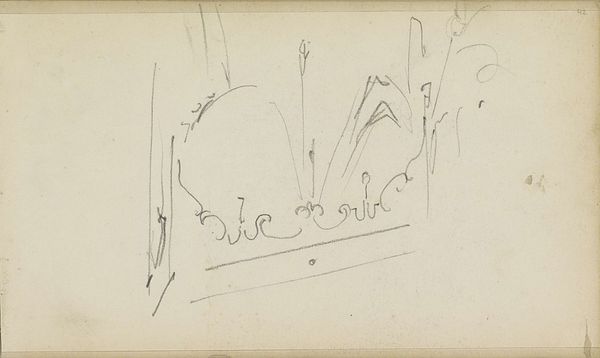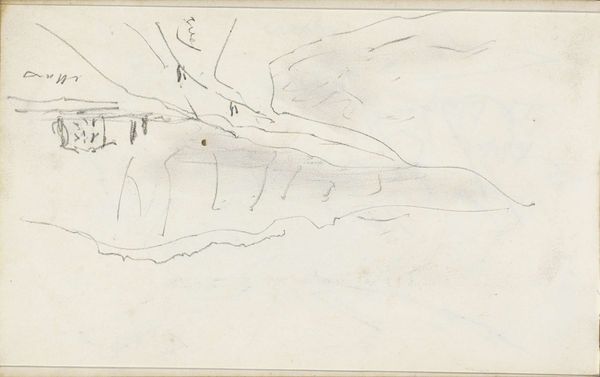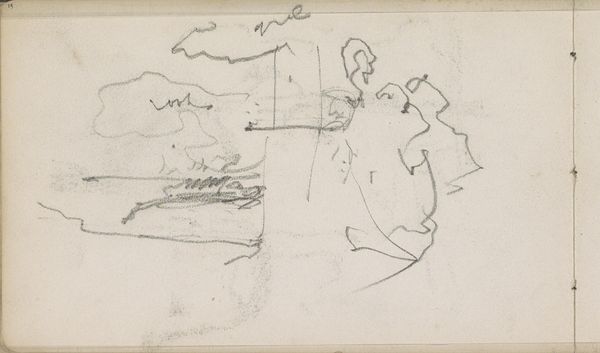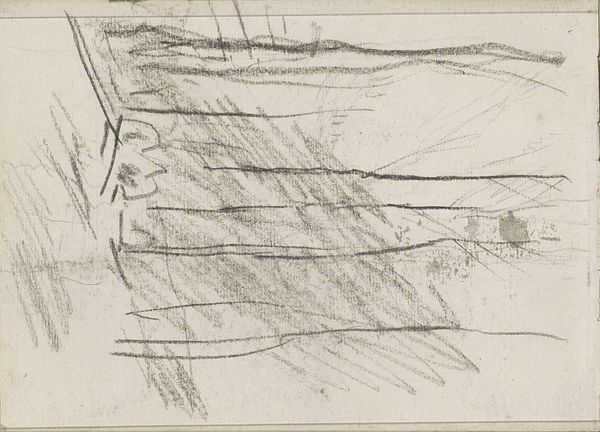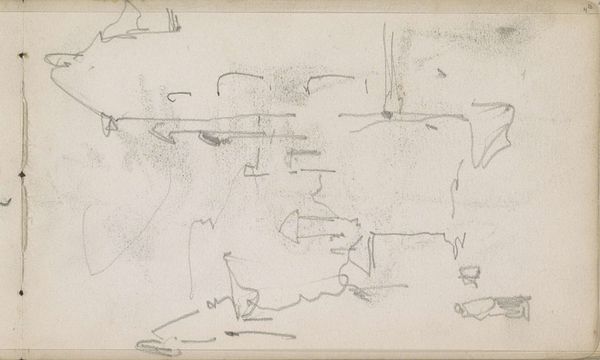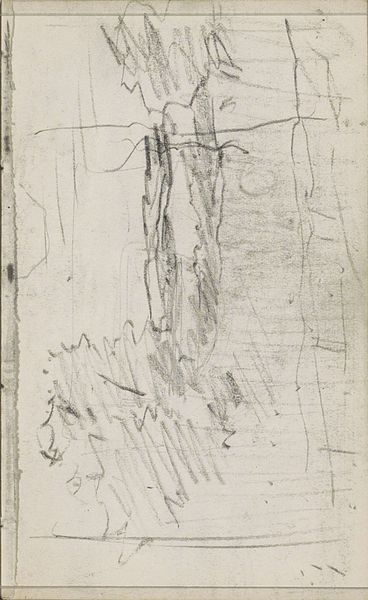
drawing, pencil
#
drawing
#
16_19th-century
#
impressionism
#
pencil sketch
#
landscape
#
pencil
#
realism
Copyright: Rijks Museum: Open Domain
Curator: This pencil sketch is titled "Schaapskudde bij een huis tussen de bomen" or "Sheep near a house among the trees" by Anton Mauve and was made sometime between 1848 and 1888. Editor: Immediately, I’m struck by its rawness. It’s incredibly sparse, almost ethereal. The paper itself is so dominant. It feels less like a finished work and more like a fleeting impression captured on whatever was at hand. Curator: Precisely. As a work rendered with humble pencil, it challenges notions of high art, bringing the materiality of drawing to the forefront. Think about the paper itself – its texture, its absorbency. These are elements directly informing the creation of the art object. How does the accessibility of these materials influence its creation and dissemination? Editor: It makes you consider the market. Was this meant for public display, or was it a private study, something made accessible only through a controlled environment like the Rijksmuseum? Also, how the institution's very act of acquiring, conserving, and displaying it shapes our understanding. Was it revolutionary in its time or something that only attained value later? Curator: I would wager both, given its impressionistic nature coupled with realist themes. The quick strokes and incomplete nature, those rapid lines denoting sheep—they speak to the immediacy of labor in the countryside. The very act of drawing mimics the temporal rhythms of rural life, a sketch rather than a grand history painting for instance. Editor: Good point. There’s a lack of dramatic narrative. It seems to present rural labor without romanticizing it. How does this lack of overt idealization play into the political context of the time? Were artists turning away from grand narratives and toward more quotidian subjects? The distribution of these types of images definitely impacts perceptions. Curator: Absolutely. And what’s easily missed is how it showcases the ready availability and relatively cheap cost of pencils. Graphite's influence and the drawings’ reproducibility made artwork available outside formal exhibition circuits. That influences appreciation. Editor: Looking at it now, that lack of polish makes it even more interesting to me. It offers a more direct glimpse into the artist’s process. Curator: It certainly offers much food for thought regarding artistic creation. Editor: And also of its historical impact and trajectory.
Comments
No comments
Be the first to comment and join the conversation on the ultimate creative platform.
